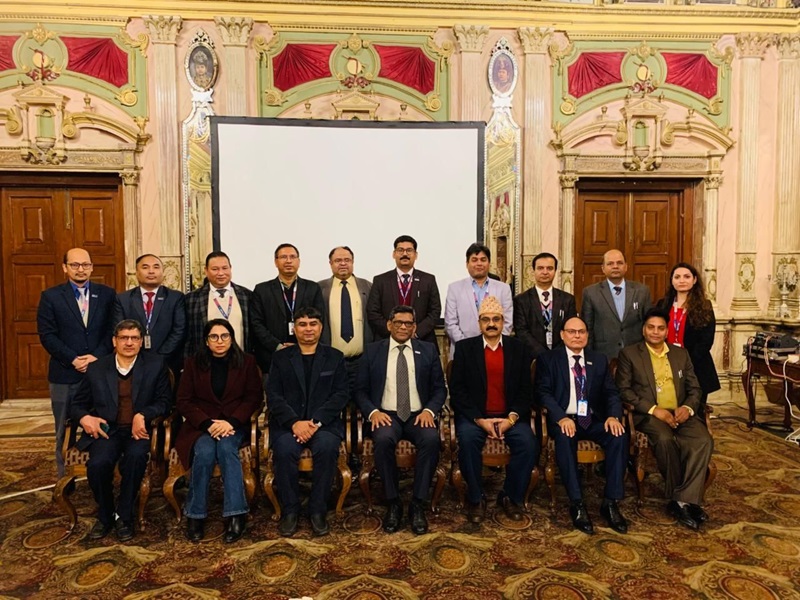Nepal SBI Bank Prioritizes Cybersecurity With Leadership Training
22nd January 2025, Kathmandu
Cybersecurity Awareness session for the Board of Directors and Senior Management of Nepal SBI Bank. This session was designed to enhance the bank’s cybersecurity posture, focusing on the evolving digital landscape, emerging threats, and practical solutions for securing sensitive data and systems in an ever-changing environment.
Nepal SBI Bank Prioritizes Cybersecurity
Key Topics Covered During the Session
The session covered a broad spectrum of cybersecurity topics, tailored to address the unique needs of Nepal SBI Bank and the financial industry as a whole. Among the key subjects discussed were:
The Evolving Internet Landscape: With the motto “One Minute Internet: Data Never Sleeps,” we explored the fast-paced nature of internet-based threats and the need for continuous vigilance.
Industry 5.0 and Implications: We delved into the emerging concept of Industry 5.0, its implications for cybersecurity, and how it is reshaping the financial sector.
Global Cybersecurity Issues & DPRK Threat: The session also provided insights into global cybersecurity issues, including the increasing sophistication of cyber threats and the DPRK threat (North Korea’s cyber activity).
Open Banking, Open Finance, and Open Data: We examined the future of open banking and the associated security risks, including challenges in maintaining privacy and data protection in a more interconnected financial ecosystem.
Emerging Technologies: The latest developments in Web 3.0, including Blockchain, Metaverse, 5G, and AI in cybersecurity, were also discussed, highlighting their potential to revolutionize data security and risk management.
Cybersecurity Frameworks and Models
To equip the Board of Directors and Senior Management with actionable insights, the session included a detailed examination of essential cybersecurity frameworks and models, including:
Rubik Cube Model: This model was used to explain the key Information Security goals and how they align with the overall business objectives of the bank.
Defense-in-Depth Approach: We discussed the importance of a multi-layered security strategy to protect against various cyber threats, with a focus on people, processes, and technology.
4P Model (People, Process, Product, and Partners): This model helped to assess risks in FinTech environments and how cybersecurity must adapt to protect all touchpoints in a financial institution’s ecosystem.
Cybersecurity Standards and Governance
The session also covered critical cybersecurity standards and governance practices:
ISO 27001:2022: The updated standard was discussed to emphasize the importance of an Information Security Management System (ISMS) in ensuring robust cybersecurity practices.
NIST Cybersecurity Framework: We explored both NIST 1.0 and NIST 2.0 frameworks, helping the leadership team understand their role in managing risks and improving cyber resilience.
COBIT (COBIT 5 and COBIT 2019): We emphasized the role of IT governance in cybersecurity, showcasing how the COBIT framework can help manage and monitor cyber risks across the organization.
Incident Reporting and Response Plans
The session concluded with an emphasis on Incident Reporting and Cyber Incident Response Plans. We discussed how banks should develop effective cyber incident response plans for payment systems to mitigate the impact of potential cyberattacks. The role of the Board of Directors in overseeing these plans and ensuring proper incident management was also underscored.
Additionally, we reviewed Nepal’s National Cybersecurity Policy 2080, which provides a framework for the country’s approach to enhancing national cyber resilience and protecting critical infrastructure.
Feedback and Future Directions
The feedback from the Nepal SBI Bank team was incredibly positive, with participants expressing appreciation for the practical and actionable insights shared during the session. It was a reminder of how crucial it is to educate leadership teams on the evolving cybersecurity challenges and solutions.
This session also highlighted the importance of having a forward-thinking approach to cybersecurity in the banking sector, especially as new technologies such as Web 3.0, AI, and 5G continue to shape the threat landscape.
Conclusion: Building Stronger Cyber Resilience in Nepal’s Banking Sector
Thank you to the Nepal SBI Bank team for their active participation and for allowing me to share my insights on this critical subject. As the cybersecurity landscape continues to evolve, it is imperative that organizations, particularly in the banking sector, stay ahead of emerging threats by fostering a culture of cybersecurity awareness, continuous education, and robust governance.








